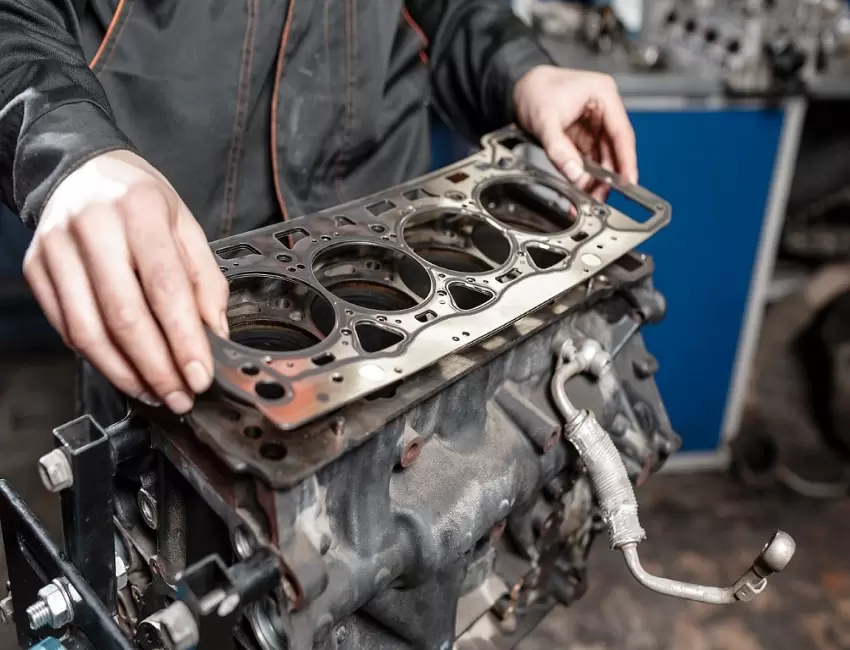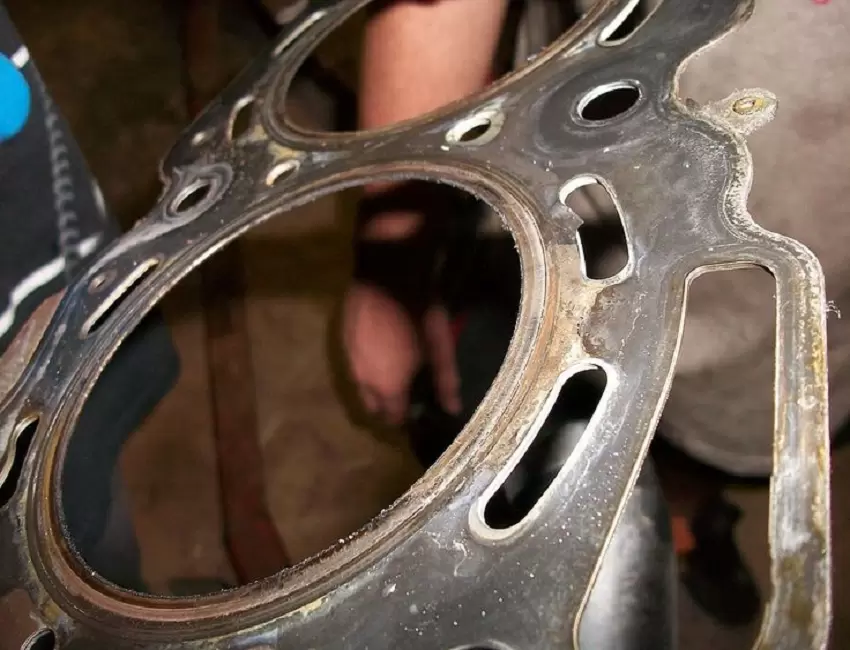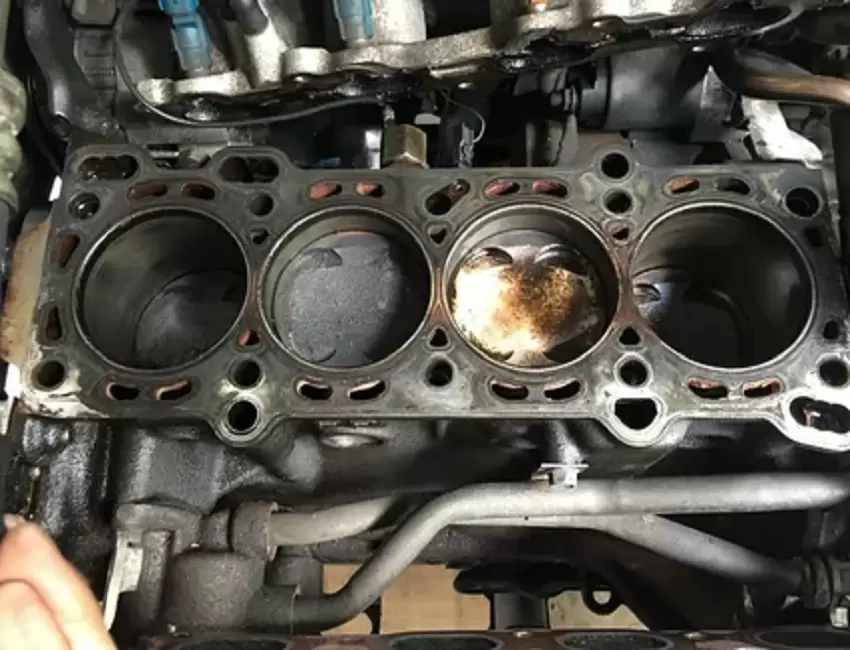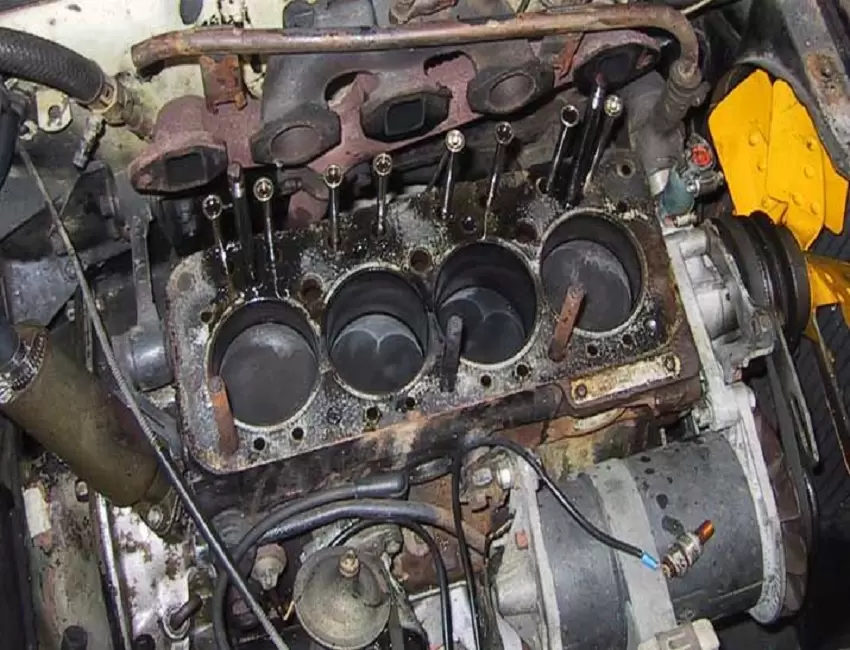Is your car acting up? Engine overheating? Have you been noticing odd white smoke emanating from the exhaust pipe? It could mean that the head gasket has blown.
This is one part that is important for your engine’s health and if it breaks down it can bring about a lot of issues. But do not fret because we have got you all sorted out.
In this all inclusive guide we shall study head gasket extensively; we will consider matters ranging from diagnosing them to fixing and preventing future occurrences of problems.
The Heart of the Matter: What’s a Head Gasket?
Before troubleshooting, allow us get acquainted with our topic. The head gasket is a slim but vital element located between the block of engine and cylinder head. You can consider it as the mediator of your machine that holds together several systems in it.
The Head Gasket’s Job Description
- Seals combustion chambers
- Keeps oil and coolant separate
- Maintains proper compression
- Prevents leaks
The contemporary vehicle head gaskets are manufactured from materials such as multi-layer steel (MLS) or copper that make them able to withstand high temperature and pressure levels. They have always been the unnoticed defenders of your engine ensuring its smooth functioning.
“A head gasket is like a good referee in a sports game; you only notice it when something goes wrong.” – Anonymous Mechanic.
When Good Gaskets Go Bad: Signs of Trouble
There are several manifestation methods for a blown head gasket . Thus, below are some of the indications to take into consideration:
1. The Smoking Gun: White Exhaust
When white smoke begins to pour from your automobile’s tailpipe, then you need to take notice. Often this smoke signifies that coolant is leaking into the combustion chambers a defining characteristic of blown head gaskets.
2. The Vanishing Act: Mysterious Coolant Loss
Notice your coolant levels dropping without any visible leaks? It’s possible that your head gasket is the one to blame for the coolant leaking into areas that it has no business being in.
3. The Milkshake Effect: Contaminated Oil
Pop the hood and check your oil. If it looks like a frothy milkshake, you’ve got coolant mixing with your oil – another red flag for head gasket trouble.
4. The Hot Seat: Engine Overheating
In particular, this applies to the situation when all other cooling system problems have been eliminated and engine temperature is excessively high. One possible explanation for such behavior is a defective cylinder head gasket.
5. The Power Drain: Loss of Compression
Does your automobile no longer feels as if it can go fast? The loss of compression and decreased power could result from a blown head gasket.
The Moment of Truth: Diagnosing a Blown Head Gasket

Suspecting a head gasket issue? Here’s how to confirm your hunch:
DIY Tests
- Coolant Leak Test: While the motor is running, examine the radiator or overflow tank for any signs of bubbling.
- Compression Test: A compression tester can be used for the purpose of checking how much compression there is in each cylinder.
- Chemical Test: You can utilize a certain kit meant for testing head gaskets to check if there are any gases from combustion in the cooling system.
When to Call the Pros
While DIY tests can give you a good indication, sometimes you need expert eyes. Consider professional diagnosis if:
- You’re not comfortable performing the tests yourself
- Results are inconclusive
- You need an exact diagnosis for insurance or warranty purposes
Common Misdiagnoses
The causes of blown head gaskets may be mistaken since they imitate other issues, therefore one must be careful not to arrive at assumptions too quickly:
- Cracked engine block
- Warped cylinder head
- Faulty radiator cap
Always confirm your diagnosis before diving into repairs.
To Drive or Not to Drive: That’s the Question
You have seen the signals but you’re late for your appointments. Is it possible to drive while the head gasket is blown? Let us analyze:
Risks of Driving with a Blown Head Gasket
- Severe engine damage
- Complete engine failure
- Increased repair costs
- Potential safety hazards
Emergency Measures
If you absolutely must drive consider these temporary fixes:
- Use a commercial head gasket sealer (as a last resort)
- Monitor temperature closely
- Carry extra coolant and oil
Running a marathon is impossible with a sprained ankle, just as driving with a busted head gasket. You might finish but you’ll cause a lot more damage in the process.” – Expert Mechanic
When to Throw in the Towel
A tow truck should be contacted in case of any of the following occurrences:
- Engine won’t start
- Severe overheating
- Loss of all power
- Visible external leaks
Breaking the Bank?: Head Gasket Replacement Costs
Money is the topic of discussion. The cost of replacing head gaskets isn’t cheap. However, many factors can inform the variation in price.
Factors Affecting Cost
- Vehicle make and model
- Engine configuration (inline V-shaped boxer)
- Labor rates in your area
- Additional parts needed
Average Costs
| Vehicle Type | Average Cost Range |
| Economy Car | $1,000 – $2,000 |
| Luxury Car | $1,500 – $3,000 |
| Performance | $2,000 – $4,000+ |
Hidden Expenses
Don’t forget to budget for:
- Diagnostic fees
- Rental car during repairs
- Potential additional repairs discovered during the process
Rolling Up Your Sleeves: DIY Head Gasket Repair
Feeling brave? It can save money repairing oneself a gasket head, but it is definitely not meant for those who are weak-hearted.
Tools You’ll Need
- Torque wrench
- Socket set
- Gasket scraper
- Thread chaser
- Service manual for your specific vehicle
Step-by-Step Guide
- Disconnect the battery
- Drain coolant and oil
- Remove intake and exhaust manifolds
- Remove cylinder head
- Clean all mating surfaces thoroughly
- Install new head gasket
- Reinstall cylinder head, following torque specifications exactly
- Reassemble all components
- Refill fluids and test
Potential Pitfalls
- Improper torque sequence can lead to leaks
- Reusing old head bolts (always use new ones)
- Failing to check for warped cylinder head or block
When DIY Becomes “Don’t Attempt This Yourself”
Consider professional help if:
- You lack the necessary tools or workspace
- Your vehicle has a complex engine layout
- You’re not confident in your mechanical skills
- The repair requires specialized equipment
The Lifespan of a Head Gasket: How Long Should It Last?

A perfect place would be where the head gasket of your vehicle’s engine would not wear out but in our world it is not so.
Average Lifespans
- Steel head gaskets: 200,000+ miles
- Composite head gaskets: 100,000 – 150,000 miles
- Older materials (like asbestos): 50,000 – 75,000 miles
Factors That Shorten Lifespan
- Frequent overheating
- Poor maintenance
- Improper installation
- Low quality coolant
- Extreme driving conditions
Signs Your Gasket Might Be on Its Last Legs
- Decreasing coolant levels
- Minor oil contamination
- Slight loss of engine performance
- Occasional overheating
An Ounce of Prevention: Maintaining Your Head Gasket
The best way to deal with head gasket issues? Prevent them in the first place.
Regular Cooling System Maintenance
- Flush and replace coolant according to manufacturer recommendations
- Inspect hoses and belts regularly
- Test the radiator cap annually
The Importance of Proper Engine Warm-Up
- Allow your engine to reach operating temperature before heavy acceleration
- Avoid prolonged idling in extreme cold
Avoiding Overheating at All Costs
- Address any temperature rises immediately
- Keep an eye on your temperature gauge
- Don’t ignore warning lights
Using the Right Coolant and Oil
- Always use the manufacturer-recommended coolant type
- Maintain proper oil levels and change intervals
The Future of Head Gaskets: Innovations on the Horizon
The dynamic character of the automobile industry has been demonstrated again through head gasket technology.
New Materials and Designs
- Multi layer steel (MLS) gaskets becoming standard
- Elastomer coated gaskets for better sealing
- Graphite composites for improved heat resistance
How Electric Vehicles Are Changing the Game
The rising popularity and use of electric vehicles seems like it spells doom for conventional cylinder head gaskets. Nevertheless EV chillers necessitate resilient sealing answers which have brought about developments in the technology used to make gaskets.
Wrapping It Up: Making Informed Decisions
Dealing with a blown head-gasket isn’t at all an enjoyable experience, but knowing a thing or two may enable one to make wise decisions about his/her car and budget.
When to Repair vs. When to Replace the Engine
Consider engine replacement if:
- The repair cost exceeds 75% of the engine’s value
- Your vehicle has high mileage (150,000+ miles)
- There’s significant damage to the engine block or cylinder head
Choosing the Right Mechanic
- Look for ASE certification
- Read reviews and ask for recommendations
- Get multiple quotes
- Ask about warranties on parts and labor
Warranty Considerations for Newer Vehicles
If your vehicle is still under warranty:
- Check if head gasket repairs are covered
- Use manufacturer approved repair shops to maintain warranty coverage
- Keep all service records

Case Study: The Tale of Two Repairs
Let’s look at two real world scenarios to illustrate the importance of prompt action:
Case 1: The Proactive Owner
- Sarah noticed white smoke from her exhaust
- Immediately took her car for diagnosis
- Confirmed blown head gasket
- Repaired within a week
- Total cost: $1,500
- Car back on road with minimal additional damage
Case 2: The Procrastinator
- John ignored his overheating engine for weeks
- Eventually car broke down on highway
- Diagnosis: Severely damaged head gasket, warped cylinder head
- Repair took two weeks due to additional damage
- Total cost: $3,800
- Additional rental car expenses and lost work time
The lesson? Don’t disregard the hints. Quick steps may help you save a lot of money over time.
Conclusion:
In summation, it is important for every car owner to know about their head gasket from its functions up to how it fails. By being alert undertaking regular maintenance and attending to issues immediately you can prevent major engine repairs that might cost your vehicle’s lives hence a smooth running for several years. An ounce of prevention at times becomes more valuable than pounds of cure when dealing with head gaskets!
FAQ:
Q: Can a blown head gasket fix itself?
A: No, a blown head gasket would not resolve itself. It’s a mechanical failure that requires replacement. While temporary sealants exist they’re not long-term solutions. Experts recommend immediate repairs of blown head gaskets since neglecting them may lead to severe damage to the engine.
Q: How long can I drive with a blown head gasket?
A: Driving a car with a blown head gasket is something that is not at all advisable. Even just a few miles could lead to catastrophic engine problems. If you must drive it should only be to a nearby mechanic. Monitor temperature closely and stop immediately if the engine overheats.
Q: Are head gasket repairs worth it?
A: The total value of a head gasket repairing job is determined by the age mileage and general condition of your vehicle. For newer or valuable vehicles it’s often worth repairing. If repair costs approach the car’s value, especially on high mileage vehicles, replacement might be more cost effective.

With over 5 years of dedicated experience in the automotive industry, I am passionate about all things automotive. My journey began with a deep curiosity for automobiles, which led me to delve deeper into their mechanics, technology and trends. My expertise spans various aspects of the automotive world, from the latest electric vehicles to classic car restoration techniques. Through my articles, I aim to share my knowledge and insights, helping readers stay informed and inspired in the fast-paced world of the automobile.











